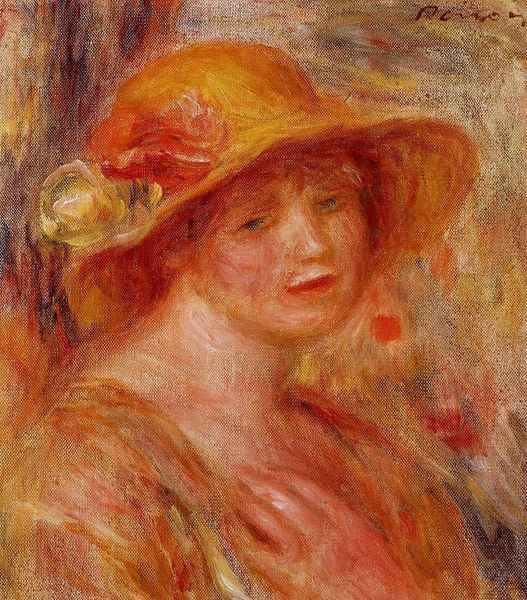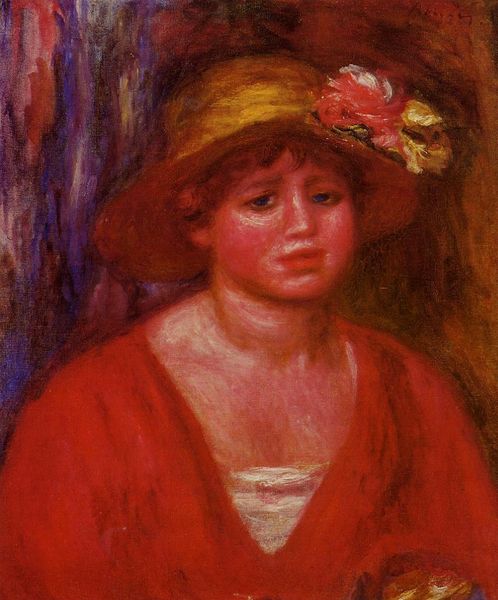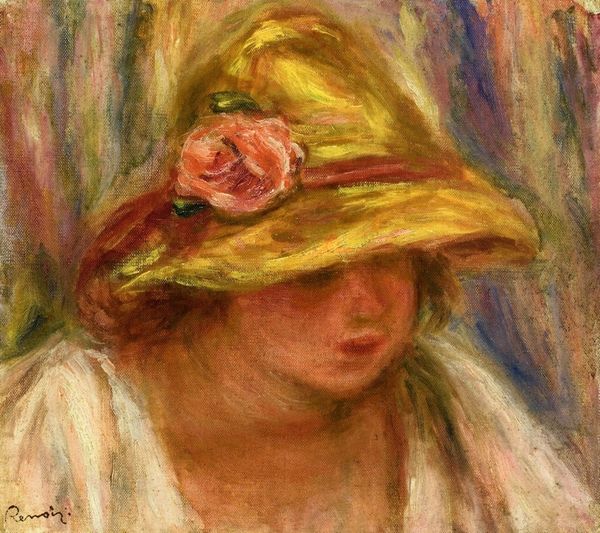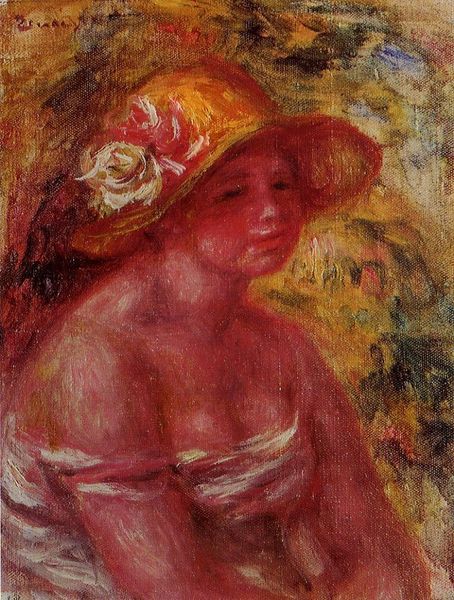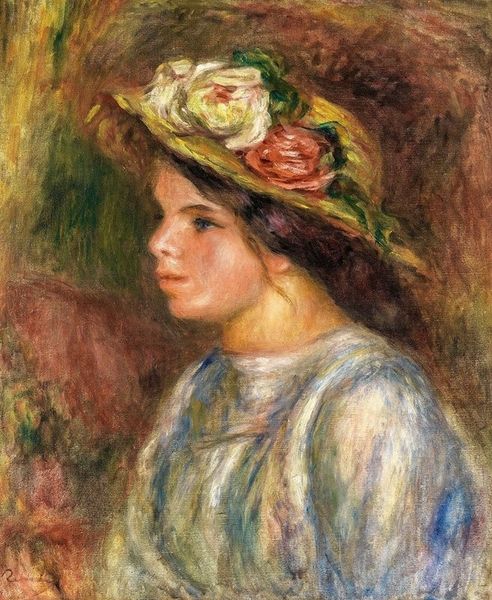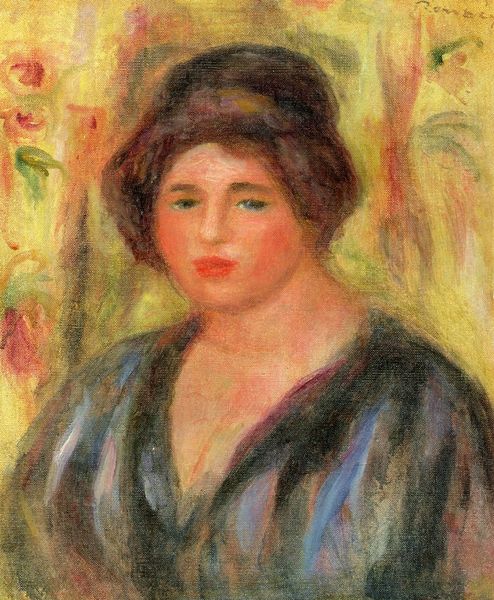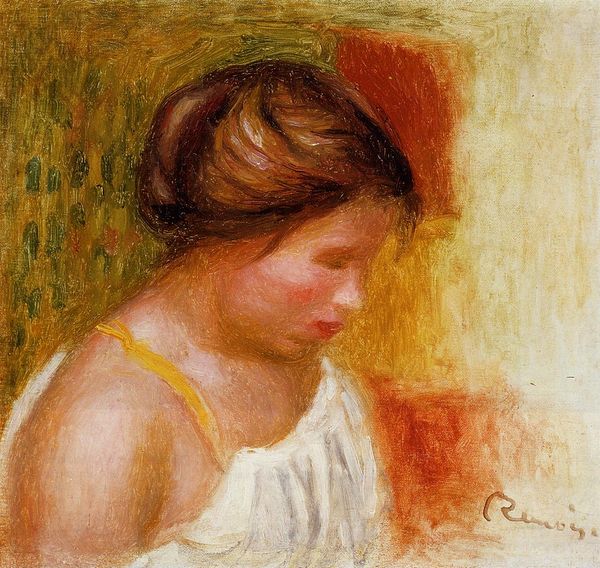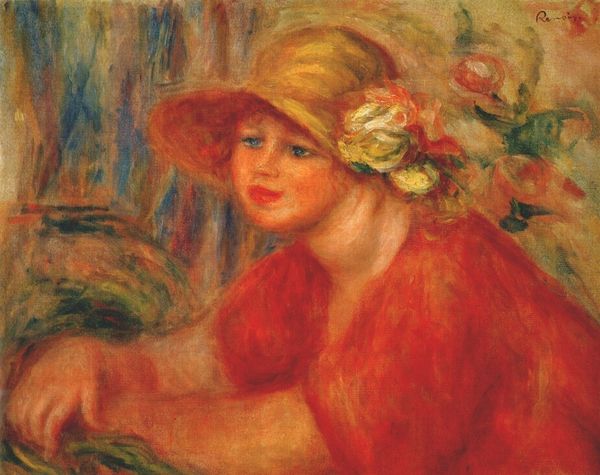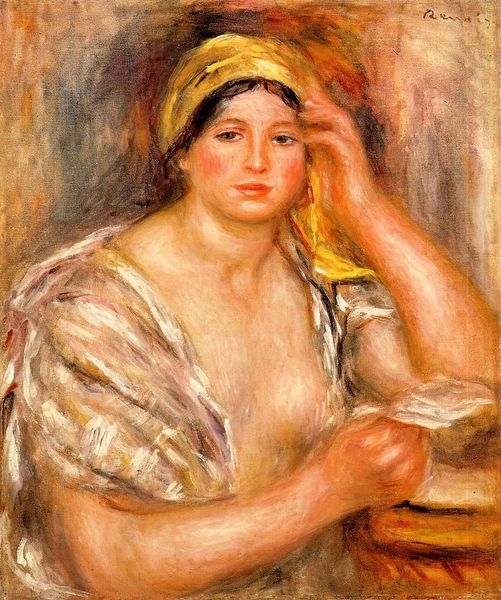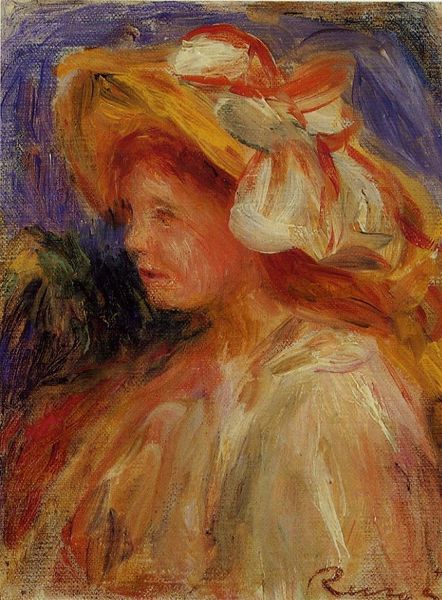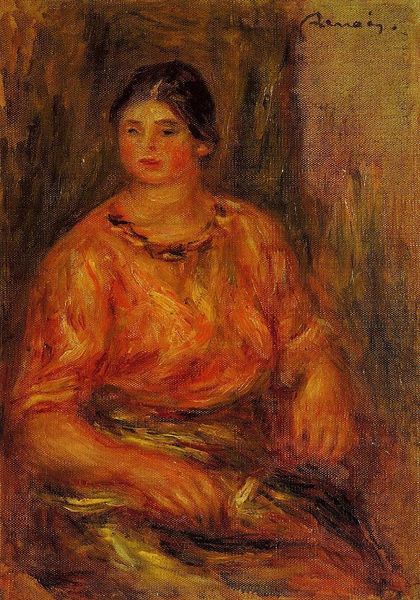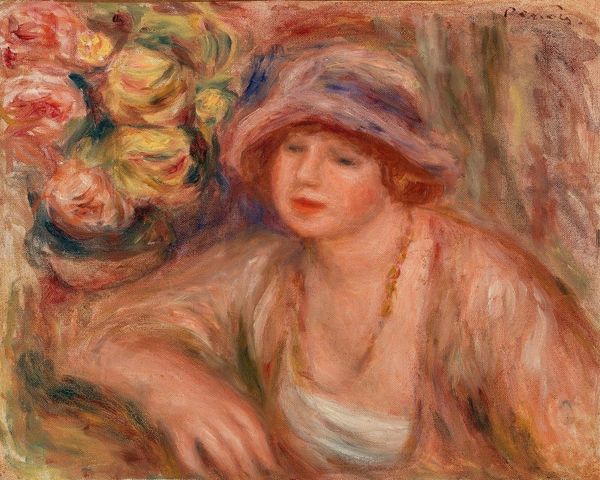
Copyright: Public domain
Curator: This is Pierre-Auguste Renoir’s “Portrait of a Woman,” painted in 1915, part of a private collection. What strikes you first about this painting? Editor: The luminosity, undoubtedly. All of these radiant, warm tones make her glow almost like a piece of earthenware fresh from the kiln. And look at the layering, how tactile the oil paint looks. Curator: It’s late Renoir. During this time, we see him moving towards a more classical approach to the figure, turning back toward an established, if modernized, aesthetic tradition. It can feel very different than his earlier works. Editor: Well, yes, his methods always interested me most. Notice the softness of the figure—there are no sharp edges, no hard lines—it's all about the gradual, delicate transitions from light to shadow, particularly around the mouth and eyes. You sense him kneading, almost massaging the pigment into shape, much like one would work with clay. Curator: Renoir was always fascinated by depicting the effects of light on skin, something central to impressionism, even towards the end of his career. The historical context is worth mentioning. The shadow of the First World War hung over France in 1915, creating both a market and taste for traditional, reassuring, and aesthetically pleasing imagery. Editor: And consider, too, how readily accessible paint and canvases were by the early 20th century. The proliferation of such tools really democratized art production. This is a beautiful display of material transforming into emotive expression. The subject matter itself could be less of a focus. Curator: To think of Renoir responding directly to a rising need for accessible, uncomplicated comfort feels too reductive, though. Even in his later work, his impressionist foundations remained vital. It's his late period blending with the past styles that he makes distinct. Editor: Perhaps. I remain fascinated by the evidence of his hand, by the physical interaction between the artist, his materials, and the social realities of that time. Curator: Seeing the evolution of artists across their lifetime provides incredible insights to cultural history and tradition. Editor: And to see the materials so skillfully coaxed into something more is a true testament to both craft and the times we find the craft.
Comments
No comments
Be the first to comment and join the conversation on the ultimate creative platform.
